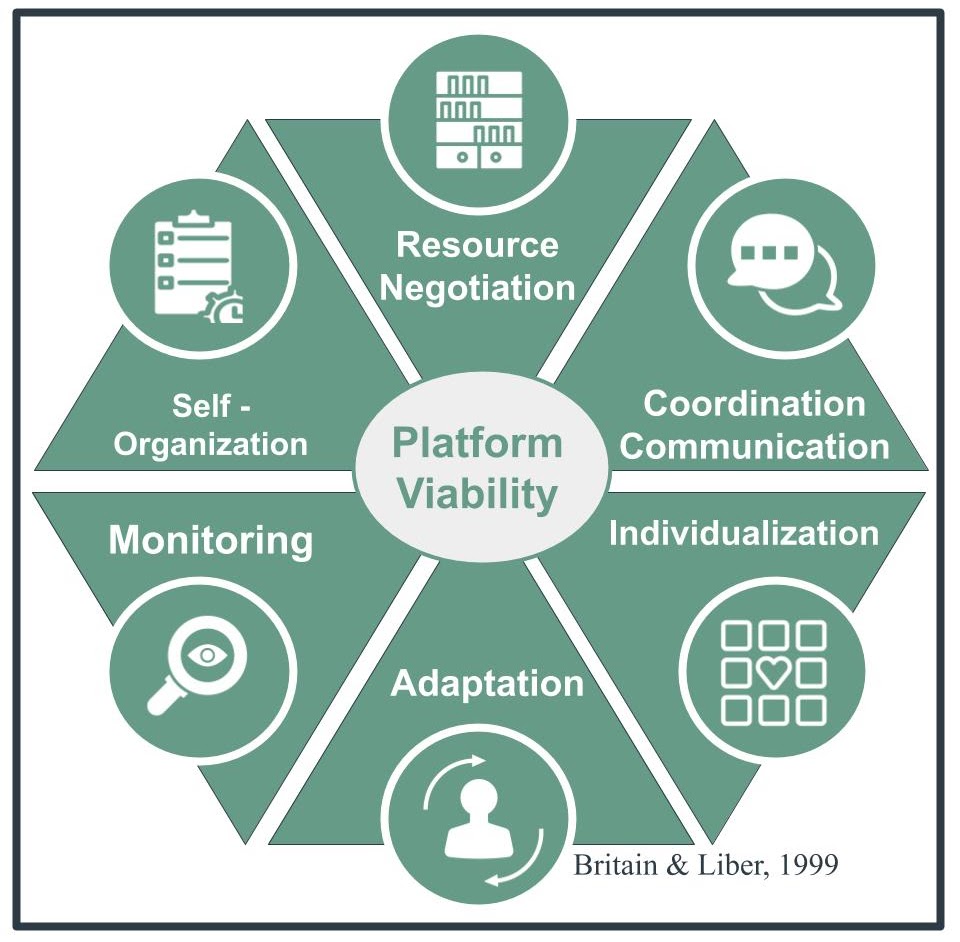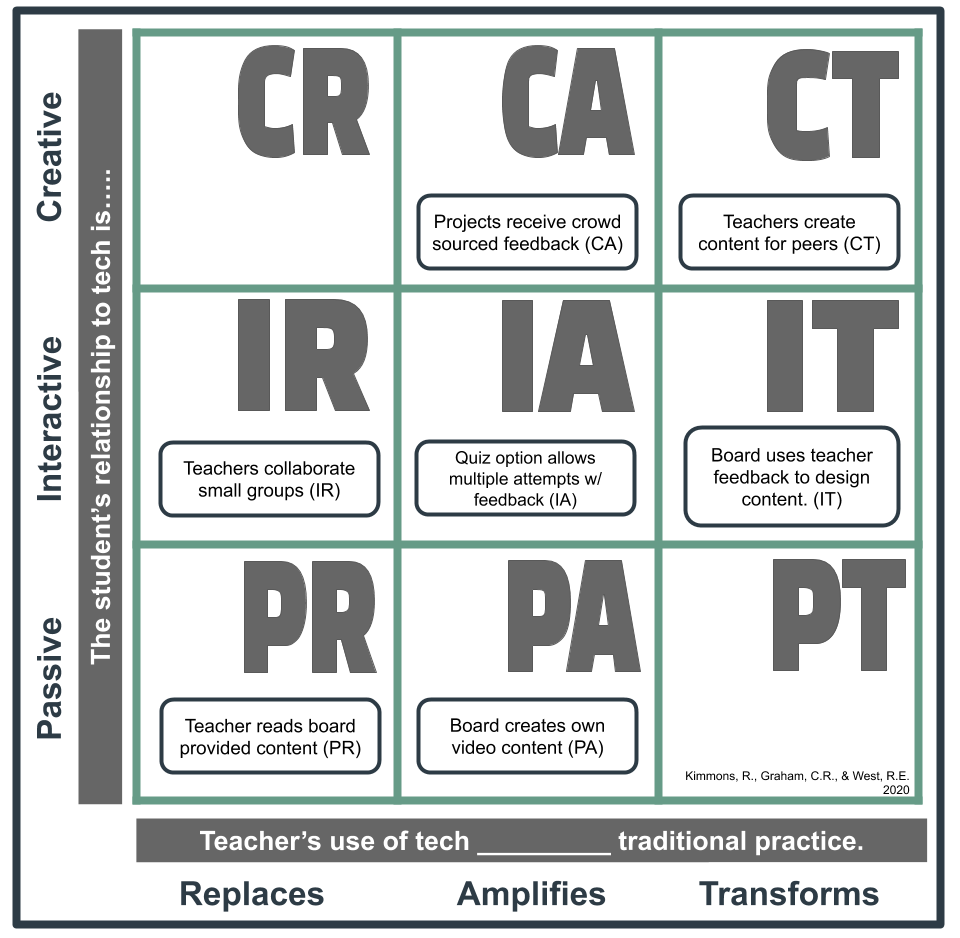Brightspace by D2L
 ™
™
Price: Free to all publicly funded school boards in Ontario
Summary: A virtual learning environment (VLE) offered through the Ontario government
Overview
A Virtual Learning Environment (VLE), sometimes also referred to as a Learning Management System (LMS) is a web-based platform that operates with a client-server relationship. The client being the web-based browser, while the server forward-facing web pages which provide and host the information related to the users and course. A VLE typically serves the needs of the organization, instructors and students. Much like a physical classroom, teaching, learning and administrative tasks can occur in this virtual space. Well known VLEs include: Canvas; Brightspace; Schoology; Moodle and Blackboard Learn.
Widely recognized and used as a tool for classroom teaching and learning, Brightspace might also be considered as a board’s host location for professional learning modules.
Critique and Implications for Education

As a digital learning space, Brightspace must establish a structure of organization that manages the interactions between its members. Building on the research of Stafford Beer, Britain and Liber (1999) ask how viable the platform is based on the following criteria: resource negotiation; coordination (collaboration); monitoring; individualization; self-organization; adaptation. To each of these criteria, Brightspace’s functionalities offer some possibility for either instructor or student.
Given the increasingly complex nature of teacher professional learning (Shaked & Schechter, 2017), the instructor is called to skillfully organize, deliver and co-ordinate resources within the virtual environment. Brightspace offers a variety of embedded tools for this purpose. These include a robust navigation bar that can host individual and nested links. The educator, upon arriving at the organization’s homepage might be directed to vetted resources the school board deems appropriate to the adult learner. Further to this, the administrator of the platform can also customize the navigation bar by user group recognizing that administrators and teachers access different external sites. A multi-dimensional approach considers the end user (Shaked & Schechter, 2017) and as well, utilizes indirect influences like suggested resources.
Collective teacher efficacy has been identified as the single most important influence related to student achievement (Visible Learning, 2020). Professional learning must provide opportunity for coordination and collaboration of shared knowledge, expertise and experience. Within Brightspace, several options lend themselves to this collaboration. These include newsfeed and activity widgets, internal chat tool, email integration and discussion forums. The course designer establishes protocols and participants then engage in constructing collective efficacy through their individual input. Of particular importance are the discussion forums. Here, the instructor or participant might pose problems of practice and crowd-source next steps, resources and solutions. An additional benefit to this is the capability to identify trends (monitoring) in teacher practice. This bird’s eye view of discussion forums allows the instructor to note a group’s proficiency or need and modify course content as necessary.
The interactive nature of the newsfeed and discussion forums lend themselves to individualization but Brightspace might consider developing a self-contained learning repository. Currently, the student is limited in customizing the platform. For example, the organization and course navigation bars can only be edited by the organization’s administrator or instructor. Recognizing the autonomy of adult learners, this VLE might offer customization options by user group. Like a web browser’s bookmarking capability, this offers unlimited potential in cataloging and constructing resource repositories.
Britain and Liber (1999) identify self-organization as another operational necessity of VLEs. Again, like the above noted lack of individualization, Brightspace does not offer adult learners the option of creating their own groups. Instructors though, can create groups and the ease in which this functionality operates ensures fluidity within the group’s enrollment. With a simple “click and assign” interface, instructors can fine-tune groupings in response to observed need and desired learning goals. Given that other available functions do lend themselves to teacher-driven collaboration (ie., discussion forums, chat and newsfeed), it isn’t necessarily a platform deficiency that participants are unable to create their own groups.

Finally, and of most significance, is the adaptability offered by a virtual blank palette. Instructors and participants are offered the possibility to design, deliver and interact with content using Brightspace’s interface and embedded functionalities. This provides a plethora of options and the ability to negotiate the intricacies of learning theories through course design and blueprint. Much like a physical classroom, the instructor and participants actively engage with the selected materials, the manner in which they are organized and the various means by which assessment and evaluation occur. Here we see the VLE as essentially the digital location and the instructor as the host who incorporates learning theories as per their own pedagogical architectural dispositions.
Therefore, Brightspace affords the instructor a digital space whereby some agile instructional design is evidenced but the responsibility lies solely with the instructor as they develop and deploy a learning ecosystem that achieves their or the organization’s stated objectives. Brightspace, while offering a myriad of functionalities, is of little consequence if the instructor hasn’t carefully considered how each can be used to execute these objectives.
Access and Cost
In Ontario, all publicly funded school boards have access to Brightspace through a contract signed between the Ontario government and Desire2Learn (D2L). Currently in its third year of a ten year agreement, this virtual learning environment (VLE) is available to teachers, administrators and support staff. Within the school board, Brightspace is supported by ministry funding through a model that places one technology-enabled learning teacher in each board. This individual works with their provincial counterparts, the regional education officer and D2L support. With single sign-on via Amazon Web Services and overnight sync with student information systems, the platform also offers ideal user-friendly integrations.
About the Author

Michelle Parrish
References
Britain, S., & Liber, O. (1999). A framework for pedagogical evaluation of virtual learning environments. JISC Technology Application Programme, 41.
Desire2Learn. (2020). Creators of the Brightspace Learning Management System. https://www.d2l.com/
Shaked, H., & Schechter, C. (2017). Systems thinking for school leaders: Holistic leadership for excellence in education. Springer International Publishing AG. https://doi.org/10.1007/978-3-319-53571-5
Visible Learning. (2020). Collective Teacher Efficacy (CTE) according to John Hattie. https://visible-learning.org/2018/03/collective-teacher-efficacy-hattie/

